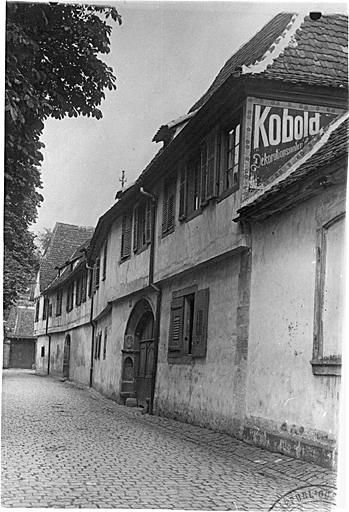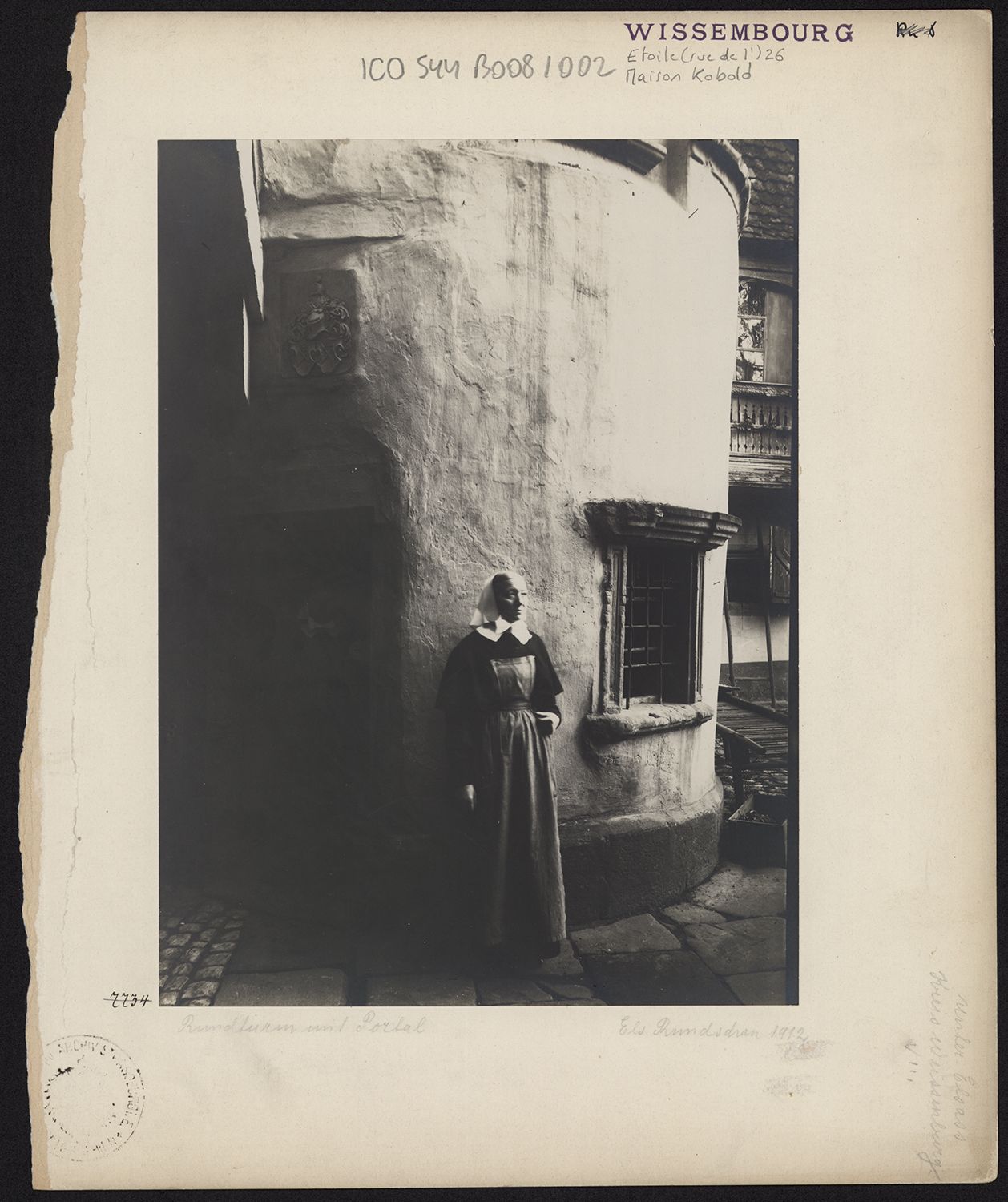About the house
Concerning the architectural style, the Kobold house is part of the Renaissance heritage of Wissembourg.
According to the vintages and coat of arms it bears, this house was built - or, more probably, brought up to date - in 1592, for F. SPITTLER and his wife, a family of patricians from the 15th/16th century, who lived there for several generations. However, certain elements of the timber frame and the framework suggest an earlier date. The date 1502, present at one of the semi-circular openings of the north wing, as well as the presence of the window opening on the north-east side of the main body onto the street, seem to confirm this hypothesis.
At the end of the 19th century, the SPITTLER heirs sold the property to a German photographer. It was around this same period, during work in 1891, that the Renaissance ceiling of a room on the first floor was rediscovered.
According to information collected by the scholar Auguste Schaaf, the well in the courtyard (located at the level of the north facade of the south wing), used as a dump for candelabras (Leuchter), was filled in at the beginning of the 20th century. He also reports that the door niches of the entrance passage each bore a stone guardian, in armor with helmet and halberd.
In 1911 the property was sold to Adalbert KOBOLD, a Weissembourg painter, and his wife Emma FRIEDERIKE. It was following this sale that the bays of the north wing were closed. Mr. Kobold died a few years later and in 1918, the mayor at the time was charged by the Municipal Council with “saving the ceiling”. The City is even considering moving it and then buying the whole house. But the KOBOLD widow was not decided to give up her home.
Ultimately, neither the house nor the ceiling will be sold to the municipality.
On June 5, 1929, the roofs, facades and Renaissance ceiling were listed as Historic Monuments by decree. In 1964, the painted decoration, which surmounts a door in the entrance passage, was discovered and restored. This vestige of a trompe l'oeil painting, which undoubtedly crowned the entire west wall of the passage and probably all the walls of the entrance passage, is either contemporary with the construction of the main building, in 1592, or slightly later . The cornice, painted with a richly molded pattern, is reminiscent of the sandstone one which crowns the old windows of the staircase turret.










